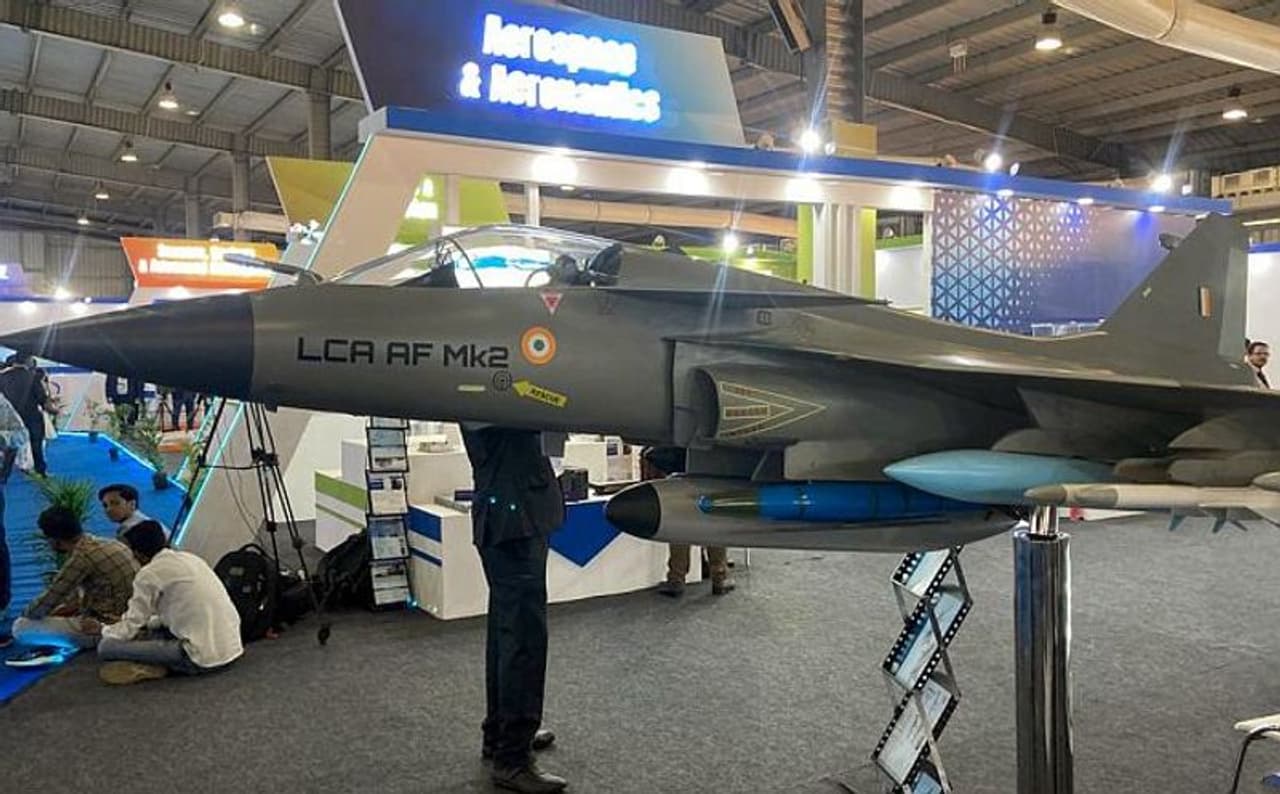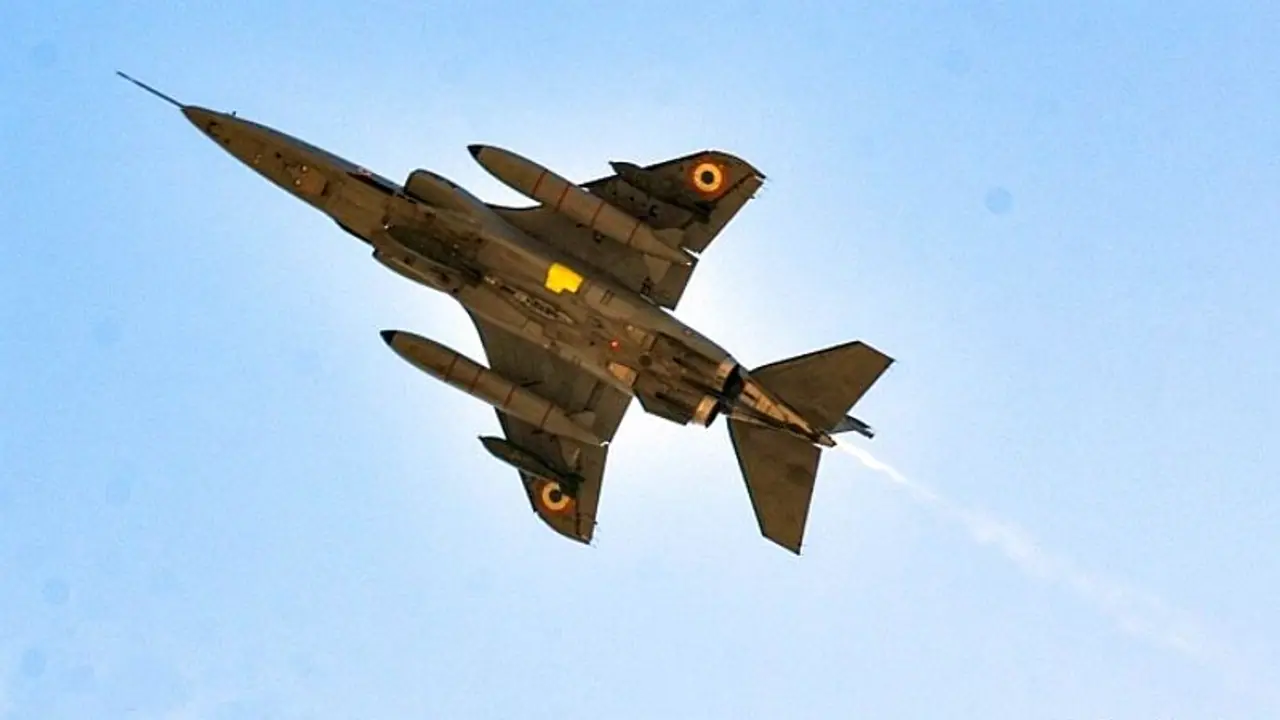While six squadrons of the Jaguar fighter aircraft would be retired by 2032 in a phased manner, commencing from 2025, three squadrons of Mig-21 to be retired by 2024, followed by phasing out of three squadrons each of Mirage 2000 and MiG-29 fleets by late next decade.
The Indian Air Force will retire up to 15 of its fighter aircraft squadrons by 2035 and replace them with the Mk2 version of Light Combat Aircraft.

While six squadrons of the Jaguar fighter aircraft would be retired by 2032 in a phased manner, commencing from 2025, three squadrons of Mig-21 to be retired by 2024, followed by phasing out of three squadrons each of Mirage 2000 and MiG-29 fleets by late next decade.
Also Read: DefExpo 2022: Boeing explains why F/A-18E Super Hornets are perfect for Indian aircraft carriers
The first prototype of the Light Combat Aircraft Mk2 is expected to be rolled out by December 2023. By 2035, all squadrons of Mig-29, Mirage 2000 and Jaguars will be retired in a phased manner. The Defence Research and Development Organisation has set a target for the LCA Mk2 first flight in December 2024 and is envisioned to build four prototypes by 2027. By the end of this decade, the aircraft is expected to join service.
Asianet Newsable spoke to LCA Mk2 Project Director Dr V Madhusudana Rao to know more about the project details and timelines.

Image: Model of the Light Combat Aircraft Mk2 at the DefExpo 2022
He said, "The LCA Mk 2 is not the same as the LCA Mk1 and the Mk1 Alpha. It is a new design and has enhanced its capabilities to replace the Mirage 2000, the Mig-29 and the Jaguar fighter aircraft in the country (Indian Air Force). This aircraft can carry 6.5 tonnes of weapon and has 11 hard points while the Mk1 has seven hard points."
"The Mk1 has the capacity of carrying 2,450 kg (litre) of internal fuel while this (Mk2) has 3,320 kg and can carry 4700kg of fuel externally. With that, its range would be enhanced to 3000 km," he added.
Also Read: DefExpo 2022: India's fifth-generation combat aircraft design to get done by December
Another force multiplier, which is unique to the Mk2, is the onboard oxygen generating system (OBOGS). The Mk1 and the Mk1A carry an oxygen bottle for the pilot, which has a maximum endurance of one to two hours, while the Mk2 will have the same for eight hours because there is nothing like a duration-limiting factor.
The OBOGS is a self-sustainable oxygen generation technology that the DRDO uses for the IAF pilots flying the LCA Tejas. This technology is fitted in fighter aircraft cockpits to compensate for the rapid decrease in oxygen levels at high altitudes.
Watch the short interview with LCA Mk2 Project Director Dr V Madhusudana Rao below
Weaponry onboard the Mk2
Dr Madhusudana further said that various weapons have been integrated into the LCA Mk2, including French, western and Russian ones and those that the DRDO has indigenously developed.
"All these weapons have been integrated into the flight design. We have the feasibility of integrating a standard weapon by design. The Mk2's wing has been widened and can carry Scalp bomb which weighs 1350kg," he said.
When asked how quickly the Mk2 can take off in a war-like scenario, Dr Madhusudana said that the aircraft would have a quick turnaround time and role change capabilities.
"There is no engine fighter aircraft on the earth that can carry 8-10 Beyond Visual Range (BVR) missiles simultaneously. We have developed it keeping in mind that the future is going to be a BVR combat war," he added.
Indigenous content
Dr Madhusudana further said that the Mk2 has more indigenous content than the Mk1 and the Mk1A.
"We started with 75 per cent and will reach 82 per cent. The engine will be manufactured in India. In this regard, we had MoU with GE for its manufacturing with 100 per cent transfer of technology. With that, we will be touching over 90 per cent indigenous content," he said.
"The Cabinet Committee on Security has cleared the proposal. There has been a two-year delay because of various reasons. We have rescheduled the rollout of the first prototype to December 2023 and, worst case, by March 2024. We are targeting the first flight by December 2024. We will have four prototypes ready by 2027, and then production will start," he added.
To recall, the government had in February 2021 inked a pact with the state-owned aircraft maker Hindustan Aeronautics Limited to supply 83 LCA Mk1A to the IAF. In August 2021, HAL signed a $716 million deal with GE Aviation of the United States for 99 F404 jet engines and support services to power the Mk-1A. It must be noted that a more powerful GE-F414-INS6 engine will power the Mk-2.
Also Read: DefExpo 2022 will see investments worth Rs 1.5 lakh crore, 451 pacts and more
Also Read: DefExpo 2022: Kalashnikov makers ready to start making AK-203 assault rifle in India by end of 2022
